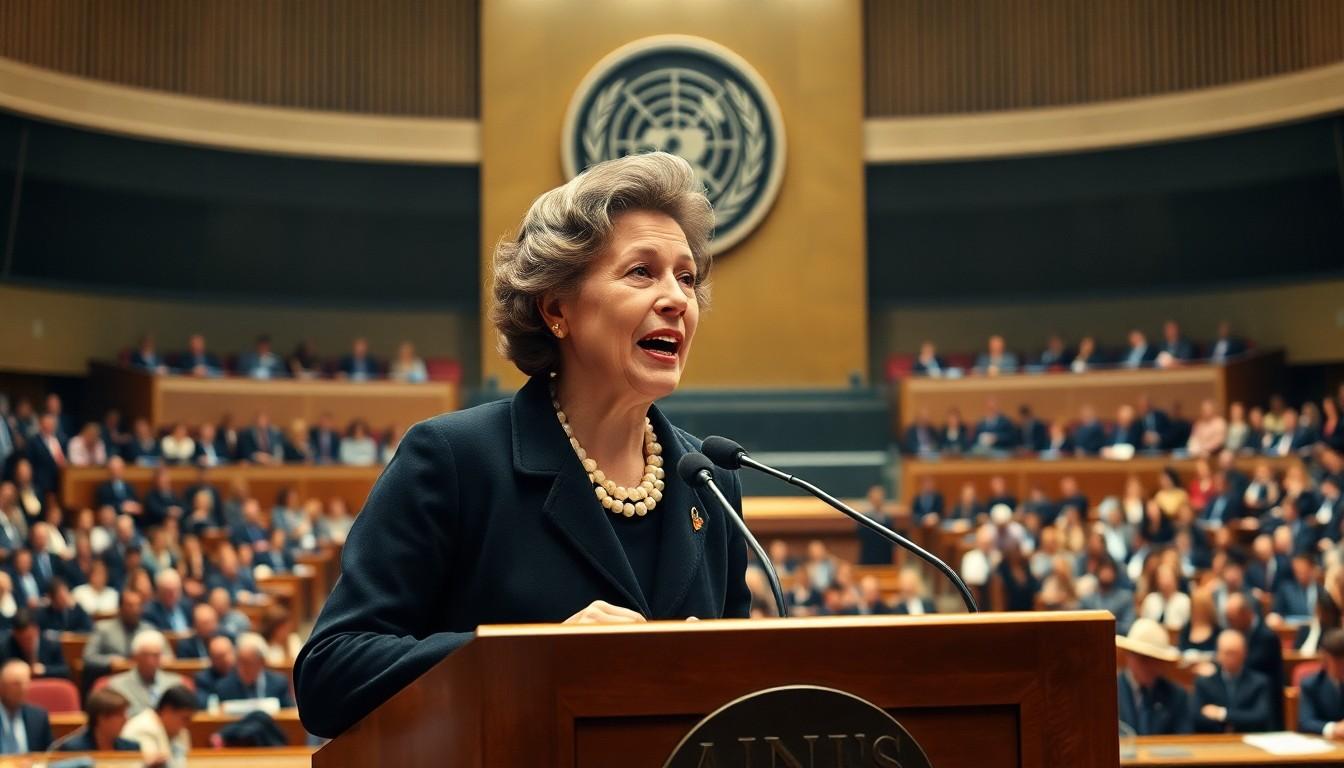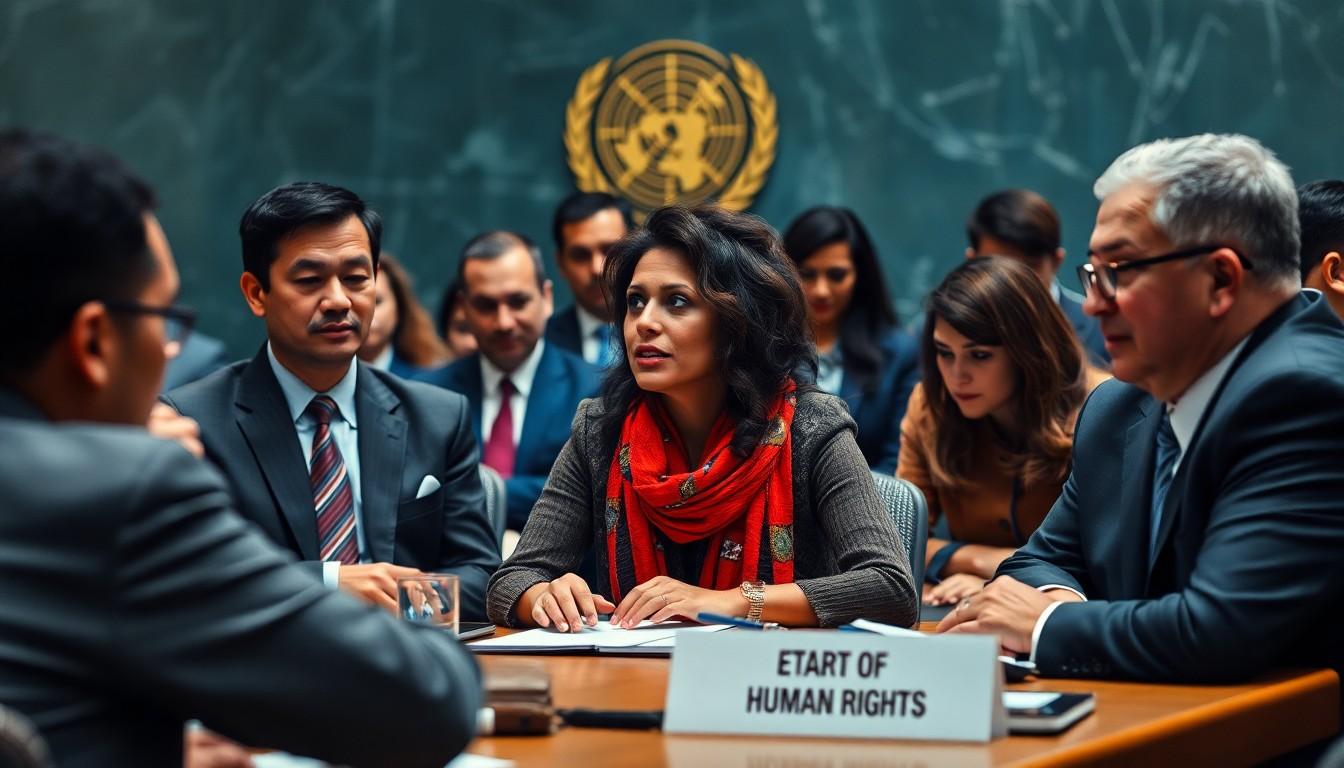The Universal Declaration of Human Rights is like the ultimate cheat sheet for humanity, outlining the rights every person should enjoy. Adopted by the United Nations in 1948, it’s a bold statement that says, “Hey, everyone deserves dignity, freedom, and a fair shake!” Imagine a world where everyone plays by the same rules—sounds dreamy, right?
Universal Declaration of Human Rights Definition
The Universal Declaration of Human Rights (UDHR) stands as a milestone document in the history of human rights, adopted by the United Nations General Assembly on December 10, 1948. This declaration consists of thirty articles that outline the fundamental rights and freedoms entitled to every individual, regardless of nationality, ethnicity, or religion. Its core principles emphasize the inherent dignity of all humans and the right to freedom, equality, and justice.
One key aspect of the UDHR is its role in establishing international norms for human rights. It provides a common standard that encourages nations to recognize and uphold these rights through national laws. Equally important, the declaration encourages countries to promote social progress and better standards of life for all individuals.
Notably, the UDHR is not legally binding. However, it has inspired numerous international treaties, national constitutions, and laws aimed at protecting human rights. Countries that recognize the UDHR generally commit to respecting the rights listed, working toward the elimination of discrimination, oppression, and violence.
Furthermore, the UDHR comprises diverse rights, including civil, political, economic, social, and cultural rights. Examples of these rights include the right to life, the right to education, and the right to work. Such comprehensive coverage underscores the importance of human dignity and respect in every aspect of life.
An enduring legacy of the Universal Declaration of Human Rights is its impact on global movements advocating for human rights and social justice. Activists and organizations often reference the UDHR in efforts to combat inequality and injustice. Its principles promote solidarity among people and serve as a rallying point for champions of human rights worldwide.
Historical Context

The Universal Declaration of Human Rights (UDHR) emerged in the aftermath of World War II, reflecting a global commitment to uphold human dignity and fundamental freedoms. Developed during a time of widespread atrocities, it aimed to prevent future violations of human rights.
Origins of Human Rights
Human rights concepts have ancient roots, found in documents like the Magna Carta of 1215 and the Bill of Rights of 1689. These early texts laid groundwork for modern human rights frameworks. Enlightenment thinkers, such as John Locke, significantly influenced ideas about individual rights, emphasizing life, liberty, and property. The tragic events of the 20th century, particularly the Holocaust, underlined the need for a more structured approach to human rights. In response, the international community recognized the vital necessity of a declaration that would articulate and protect these rights universally.
Key Milestones Leading to the Declaration
Several key events paved the way for the UDHR. The establishment of the United Nations in 1945 marked the beginning of formalizing human rights at an international level. In 1946, the UN General Assembly created the Commission on Human Rights, charged with drafting a declaration. Eleanor Roosevelt played a pivotal role, advocating passionately for inclusion of diverse voices. In 1948, the UDHR was adopted unanimously by the UN General Assembly, solidifying its status as a landmark document in the quest for global human rights. This declaration inspired further treaties and protocols aimed at safeguarding human rights around the world.
Main Principles of the Declaration

The Universal Declaration of Human Rights emphasizes essential liberties universally applicable to all individuals. It underscores the need to secure these freedoms without exception or distinction.
Fundamental Rights and Freedoms
Fundamental rights and freedoms comprise the core of the UDHR. These include the right to life, liberty, and security, alongside freedom from torture and degrading treatment. Each article outlines specific protections, such as the right to a fair trial and freedom of expression. These articles collectively support individual autonomy, fostering peaceful coexistence among diverse populations. On a global scale, they inspire movements that advocate for equality, further promoting social justice and human dignity.
Importance of Equality and Non-Discrimination
Equality and non-discrimination form the bedrock of human rights. Every individual, regardless of ethnicity, gender, or religion, deserves equal treatment and protection. The UDHR articulates that discrimination undermines personal dignity and societal harmony. By promoting equality, the declaration lays groundwork for inclusive societies, where diverse voices contribute to decision-making processes. This principle drives international efforts aimed at combating injustices, encouraging nations to implement laws that uphold the ideals of fairness and respect for human rights.
Impact on International Law
The Universal Declaration of Human Rights (UDHR) significantly influences international law. It provides a framework that nations reference when drafting their laws.
Influence on National Legislation
Nations adopt the principles of the UDHR, shaping their legal systems to align with its standards. Countries implement domestic laws that protect rights outlined in the UDHR, including protections against discrimination and the right to free expression. Legal reforms often aim to harmonize national statutes with international human rights obligations. Numerous national constitutions explicitly incorporate UDHR principles, showcasing its foundational role in establishing a commitment to human rights. By embedding these principles into local laws, countries enhance accountability for human rights violations.
Role in International Relations
The UDHR serves as a benchmark for assessing human rights practices globally. Nations that prioritize human rights in their foreign policies often establish stronger diplomatic relations. Countries frequently use the UDHR when engaging in treaties or trade agreements, expecting partner nations to uphold fundamental rights. International organizations, such as the United Nations, monitor compliance with the UDHR, fostering dialogue on human rights issues. This document influences discussions at international forums, shaping collaborative efforts to promote and protect human rights worldwide.
Challenges and Criticisms
The Universal Declaration of Human Rights (UDHR) faces various challenges and criticisms despite its foundational role in advocating for human dignity.
Limitations of the Declaration
The UDHR contains inherent limitations, primarily its non-binding nature. Many countries opt not to incorporate its principles into domestic law, weakening its potential impact. Ambiguities in language create differing interpretations, allowing nations to sidestep obligations. Additionally, cultural differences can lead to resistance against certain rights deemed “Western.” Socioeconomic factors play a role, as underprivileged states often prioritize economic stability over human rights. Due to these limitations, achieving universal adherence to the UDHR remains problematic.
Ongoing Human Rights Violations
Human rights violations persist globally despite the principles outlined in the UDHR. Countries like North Korea and Syria illustrate systemic abuses, including torture and extrajudicial killings. Many nations fail to protect minority groups, leading to continued discrimination in various forms. In regions facing conflict, such as Yemen and Afghanistan, civilians experience rampant violations, including forced displacement and gender-based violence. Critics emphasize the need for stronger international mechanisms to enforce human rights standards. Accountability gaps remain prevalent, allowing violators to act with impunity in several contexts.

